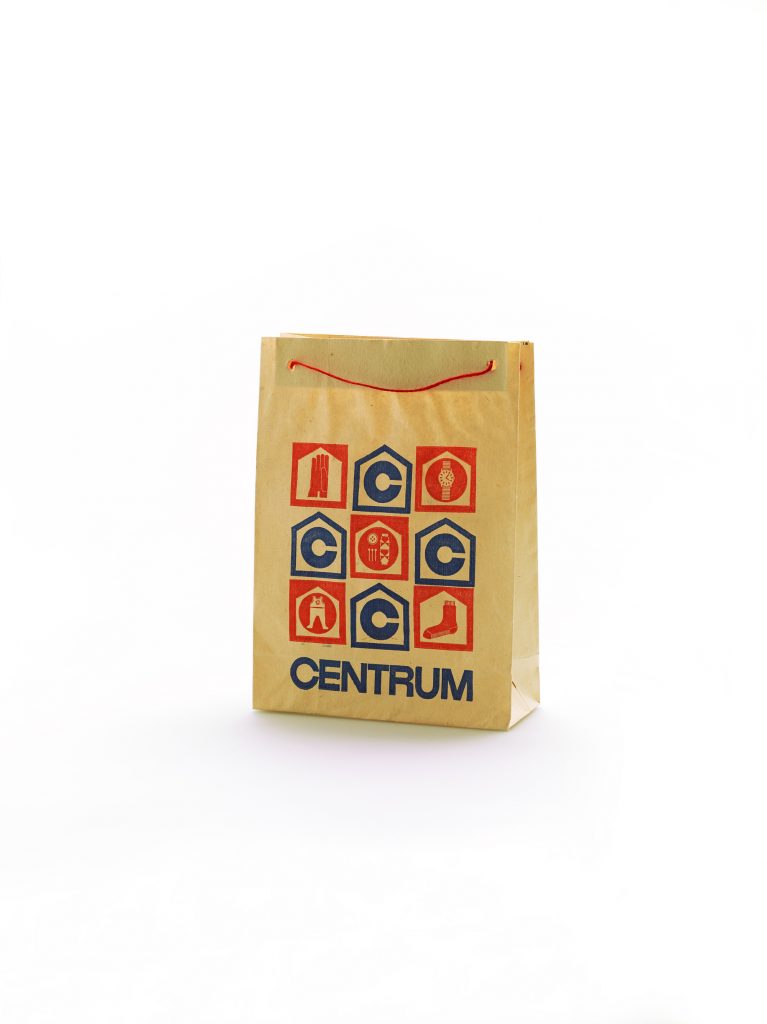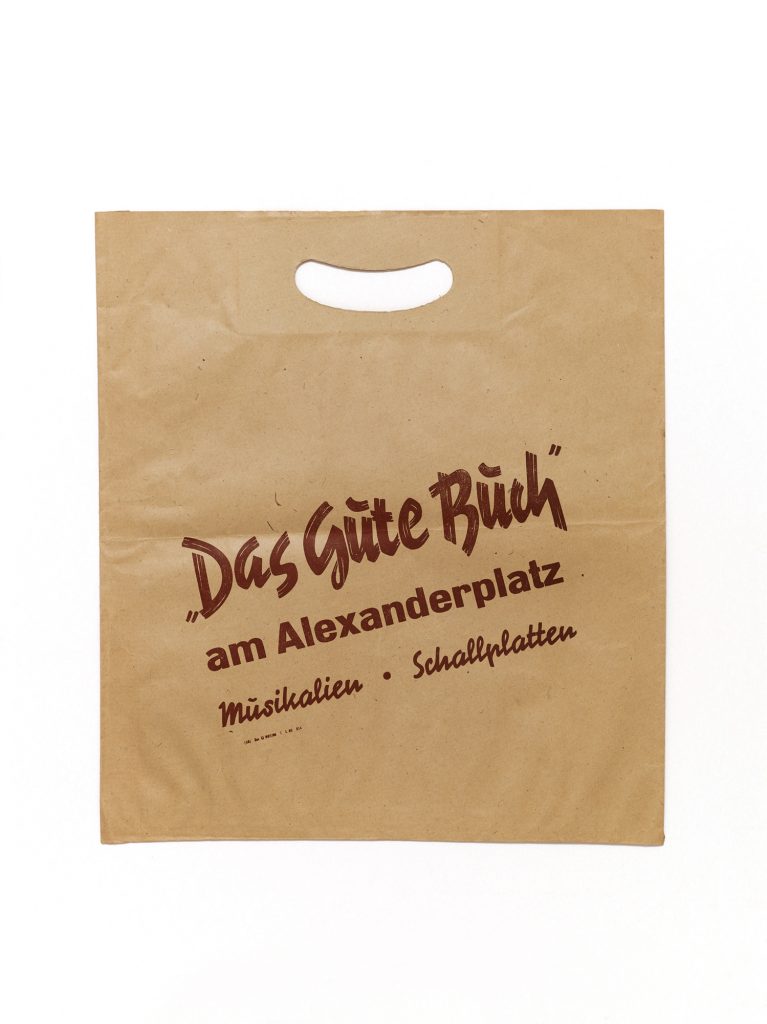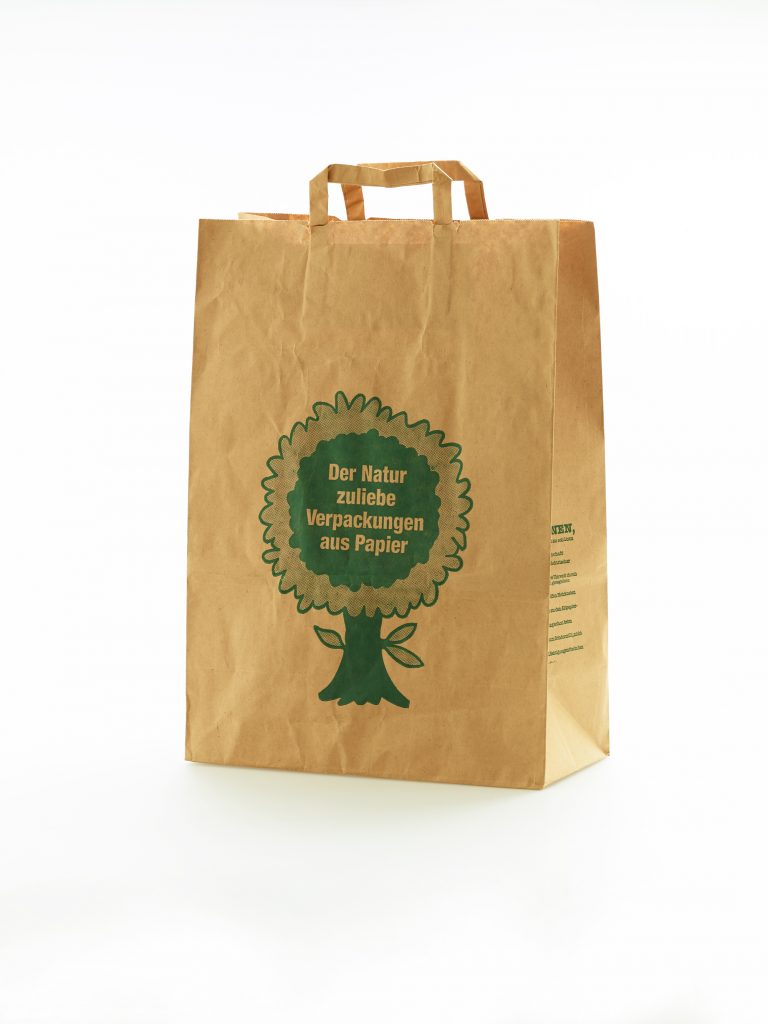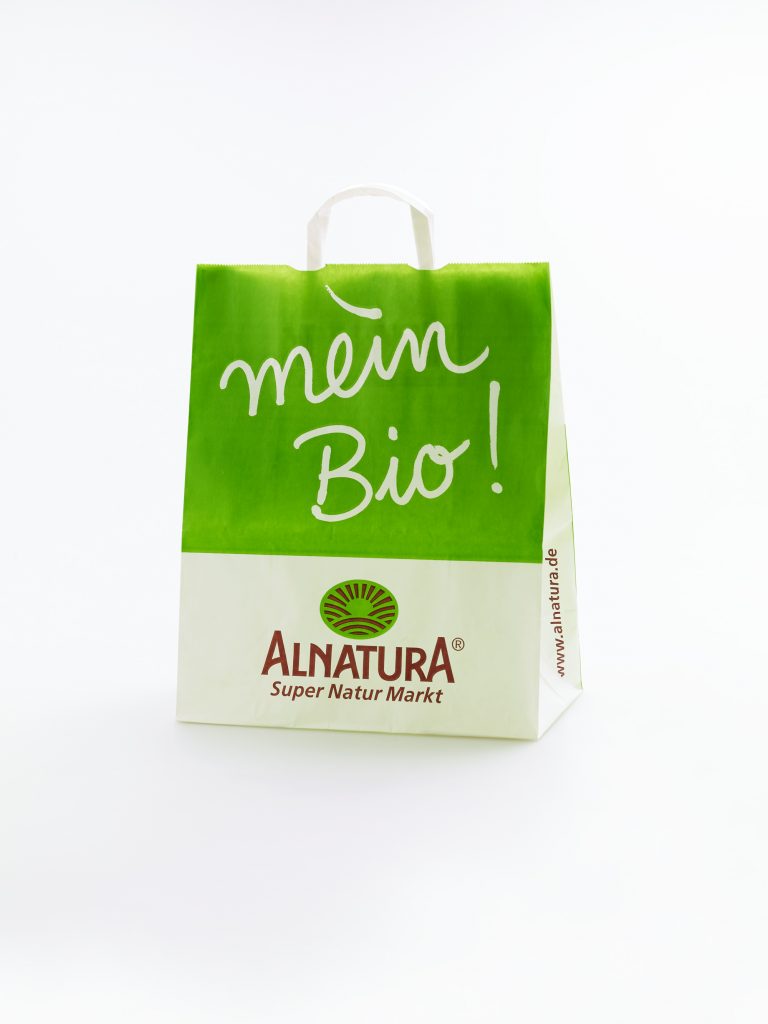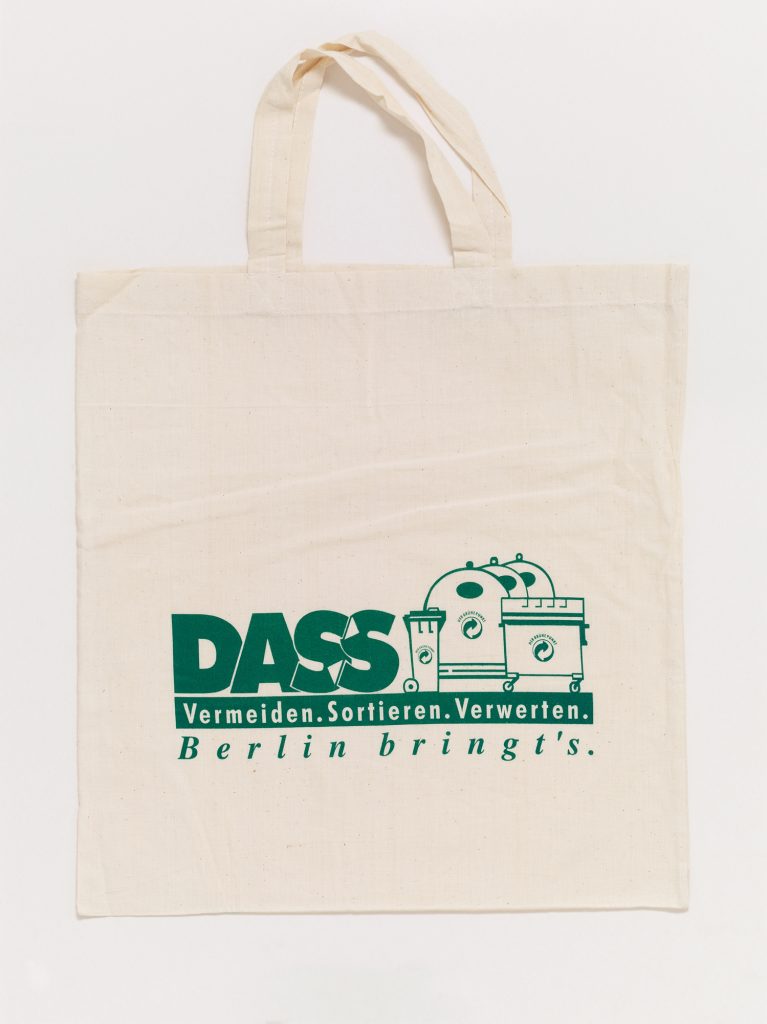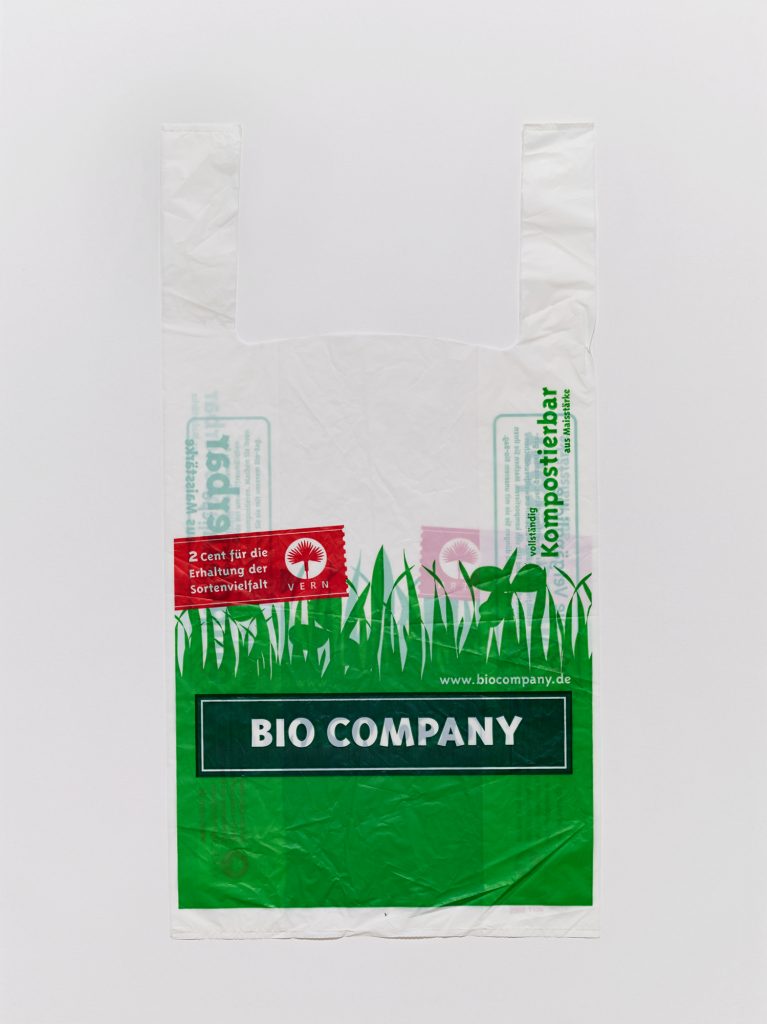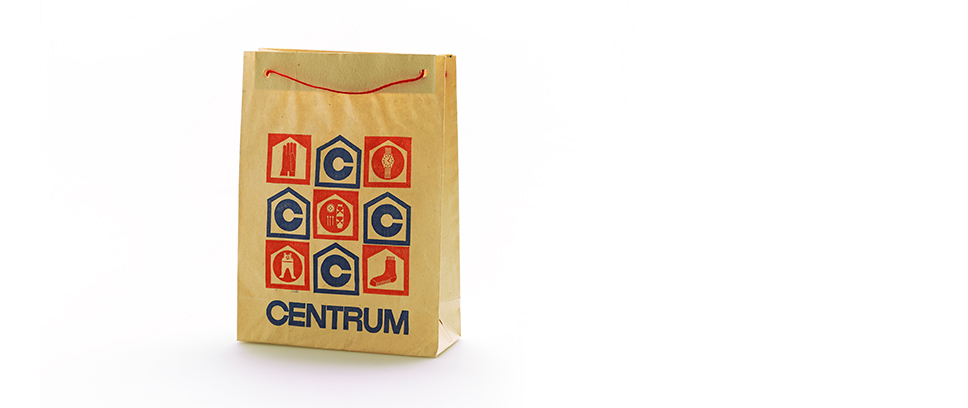
This comes into/onto the bag
Sabine Witt | 14 July 2023
A glance at the collections of the Deutsches Historisches Museum reveals the immense variety of objects that are related to different epochs and topics of German history. They tell stories of our past or current lives, of famous or often unknown persons and events. In our new blog series #Umweltsammeln (#Environmentcollecting) we present various objects that have to do with the topic of “environment”. Unexpected questions raised by the heads of the different collection sections open new perspectives on historical objects and often reveal startling parallels to questions that deal with our current world.
The relationship between us human beings and the environment is one of the central topics of Everyday Culture. Dr Sabine Witt, head of this collection, sheds light on certain kinds of objects that we use almost every day but seldom pay close attention to: Paper and plastic bags are testimonies to economic, cultural and social history and at the same time are expressions of mass aesthetics and environmental issues.
Ever since people have traded in the goods and foodstuffs they consume, they have been confronted with a challenge: How can these goods be transferred from A to B without being lost or damaged? The packaging of merchandise in a convenient form therefore has its own history; materials and their uses have changed in the course of time, advertising and consumer behaviour have taken on new forms. This is evident in certain objects in the Everyday Culture collection that have seldom been in the centre of attention: carrying bags made of paper, plastic or other materials.
When the museum put out a call around 1990 to gather objects from the former East German state: “The GDR to the Museum”, the first bundles of tote bags began arriving in the collection, which came to be known as Everyday Culture in 1992. These included bags from commercial organisations and well-known shops and department stores, such as the “Centrum Warenhaus” or the book, musical supplies, and record shop “Das gute Buch” at Alexanderplatz in Berlin. These two examples, by the way, stand for two different kinds of shopping bags – the older model with cord handles that had been in use since the end of the 19th century and the relatively newer variation from around 1965 that can be gripped through holes stamped out of the reinforced edge at the top. Products from the “West” expanded the range of goods in the museum’s collection, the majority of which consisted of tote bags made of colourfully printed plastic materials, which in the 1960s began to replace the paper bags and sacks. The paper-processing industry, which represented a rather small part of Germany’s overall economy and was mostly in the hands of medium-sized enterprises, thus experienced a downturn.
The bag used as an advertising vehicle is almost as old as the invention of industrially manufactured paper bags, the production of which began in 1853 in Gumpert Bodenheim’s factory in Allendorf an der Werra (now in Hesse). Many different things are advertised on bags: manufacturing and trade enterprises, customer friendliness, numerous different products, or the diversity of goods on offer. But the bags can also be used to spread information about urban festivities and major events, or simply to say: “I was there.” Sometimes the name and logo are too big for the space, while, contrarily, six simple letters can be enough to suggest distinction, (good) style and (expensive) taste, as witnessed by this “signature bag”.
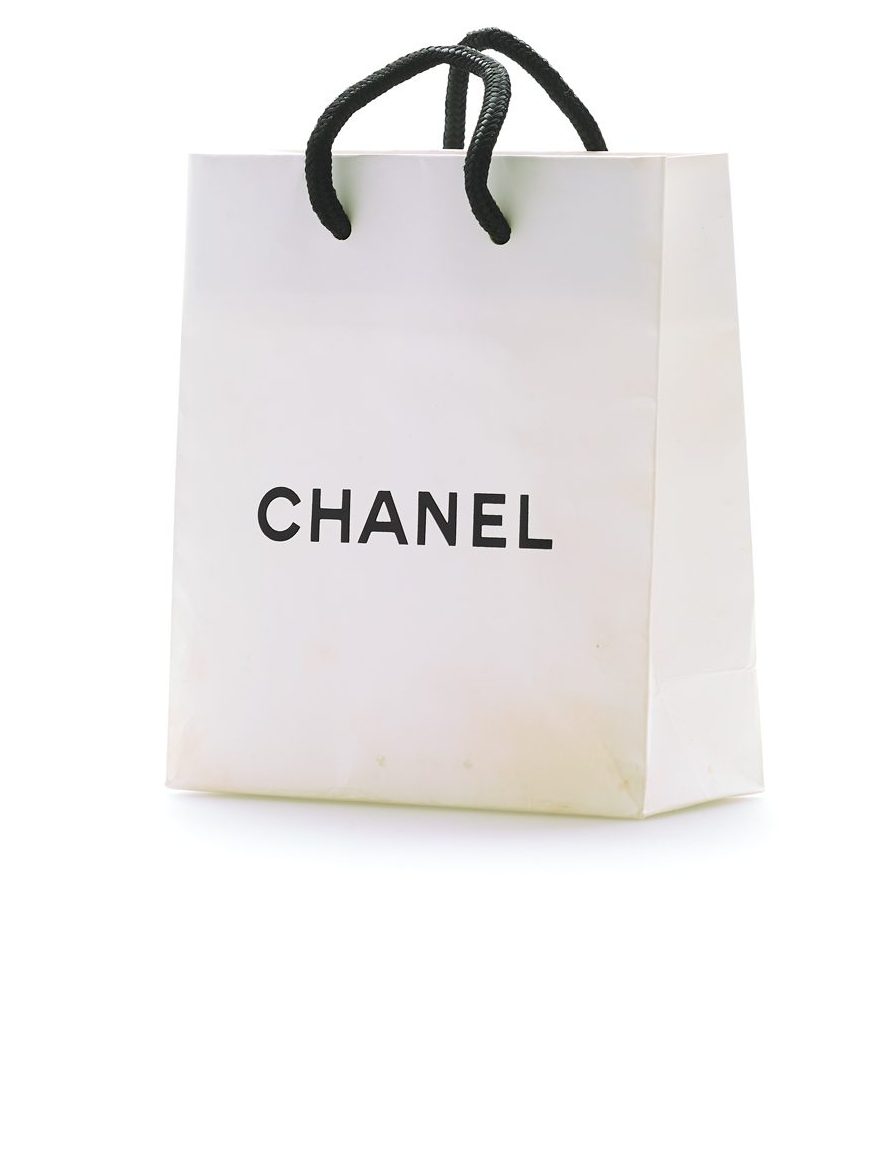
And even if the aroma of Chanel No. 5 has long since faded away, the shopping bag will be used for other purposes and proudly displayed. Revealing and concealing is another game in which such bags can play a role. There is a long history of square, transparent plastic bags that are handed out free of charge to readers in the Berlin State Library to carry their belongings into the reading room, clearly visible to the supervisory staff. Since they are stable, durable, and allow a peek at the contents for the curious, the tote bags are also gladly flaunted outside of the hallowed halls of the library.
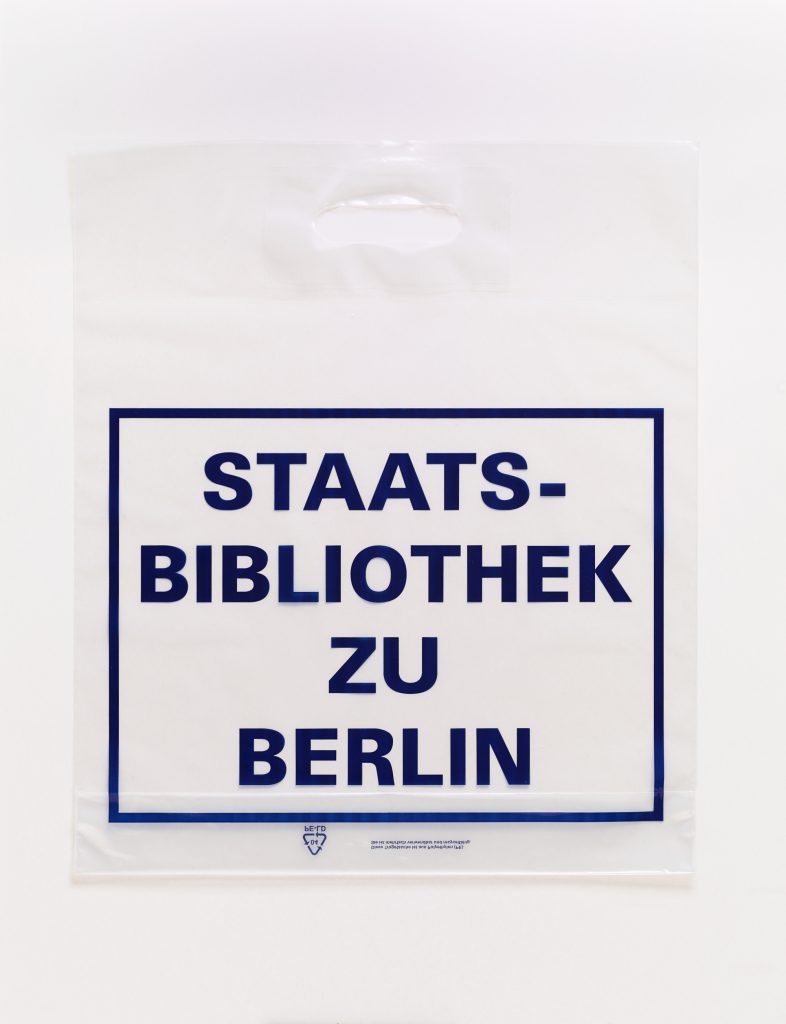
A view of the collection clearly shows that the collecting of merchandise packages, carryalls and tote bags represented a focal point of the Everyday Culture department in the year 2012. Rosemarie Beier-de Haan, the former head of the collection, was particularly interested in the larger topic of packaging waste, and of the handling of materials and resources. Among many other objects that found their way into the collection at the time were a plain paper tote bag printed with the motif of a tree and the inscription “Der Natur zuliebe” (For the love of nature), a shopping bag from the organic supermarket “Alnatura”, a plastic bag from the “Bio Company”, as well as a cloth bag that promoted the Dual System, i.e. recycling and sustainable economy. The so-called “shirt bag” of the “Bio-Company” documents the search for new materials and a heightened consciousness of the environment, for the bag was produced from genetically unmodified cornstarch and was even supposed to fulfil a second purpose: “Do your plants a favour and fertilise them with our organic bag.”
The actual quota of recycling and composting of such products can perhaps be called into question, however. In 2016 a law was passed to prohibit the handing out of free, thin, plastic shopping bags in retail shops, a turning point in the fight against plastic waste. Since 2022 this is completely forbidden, with the exception of paid-for, durable, reusable tote bags as well as especially thin disposable bags with a thickness of under 0.015mm, for such things as fresh fruit and vegetables. Some 2.4 billion such bags are used every year in Germany alone. Parallel to this development, the paper bag – a sustainable, multi-usable and recyclable package – is enjoying a comeback. Finally, Paper Bag Day, celebrated for some years now in Europe on 18 October and in the United States on 12 July, offers “food for thought”. Or you simply carry your groceries home in a multiply re-usable tote bag or net or basket, or you go shopping in the nearest non-packaging shop, bringing your own bottles and glasses with you.
|
|
Dr Sabine WittDr Sabine Witt is head of the collection of Everyday Culture in the Deutsches Historisches Museum. |
